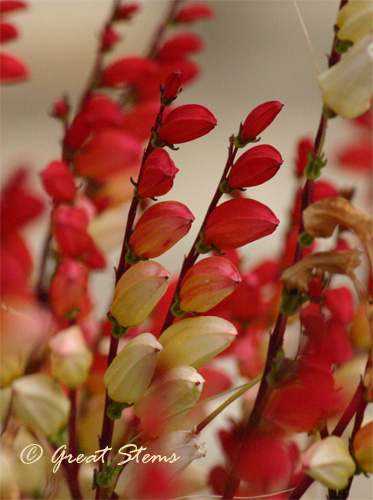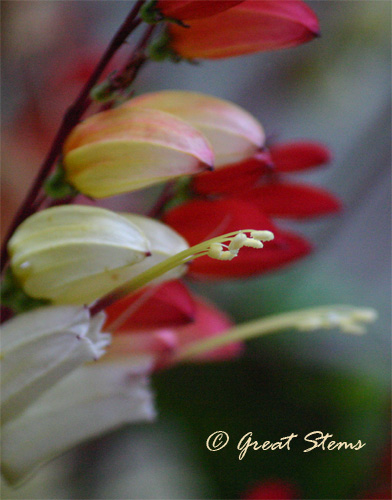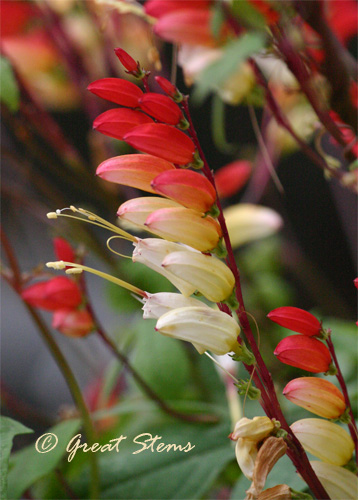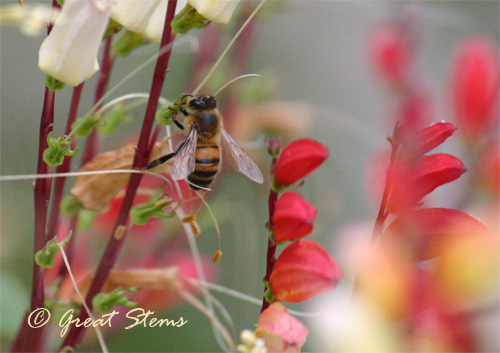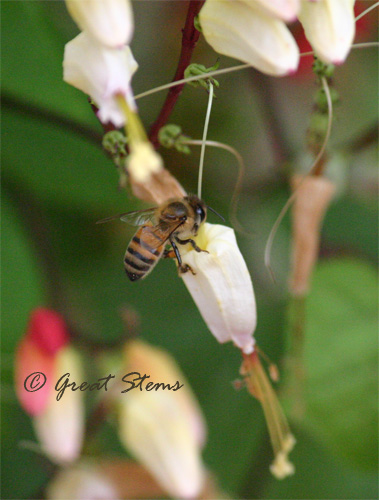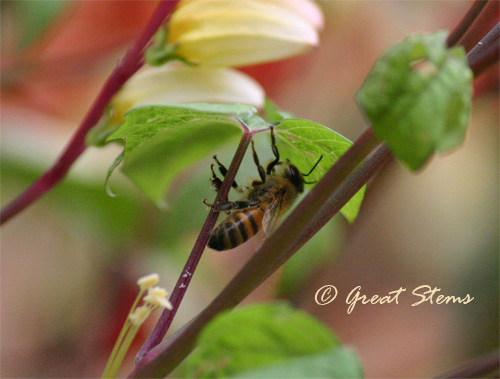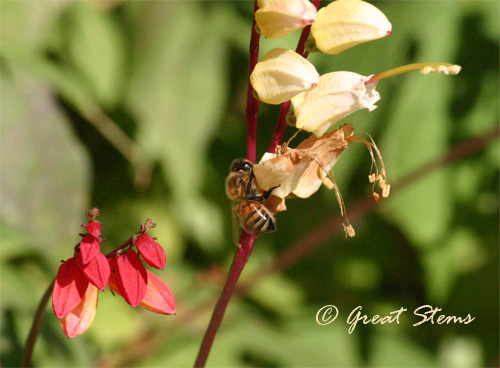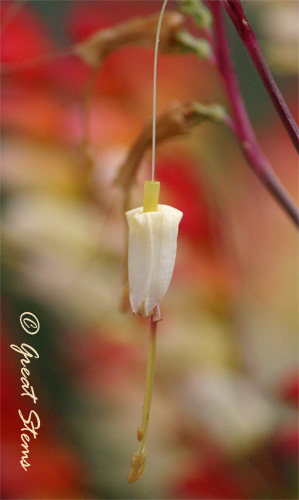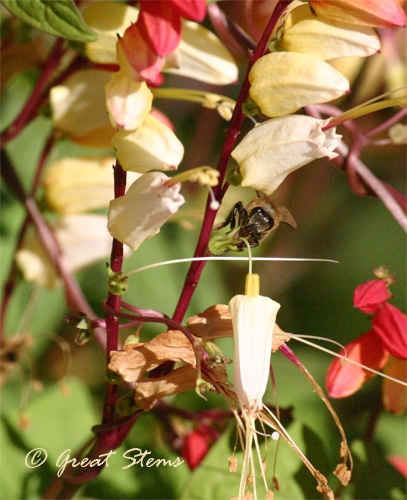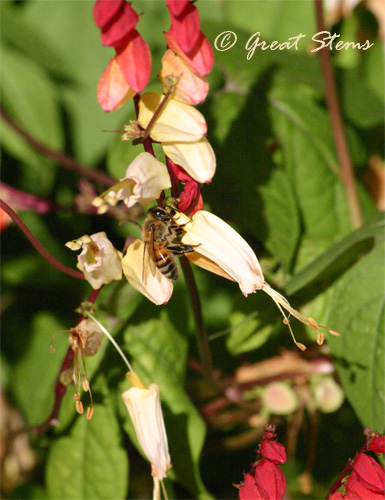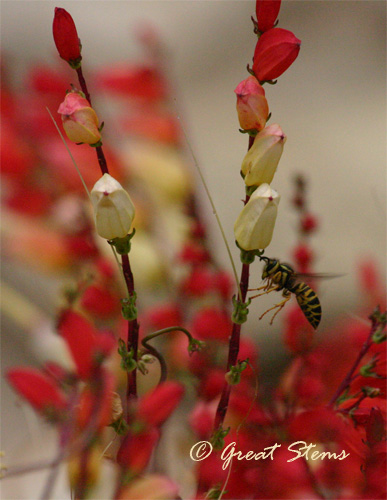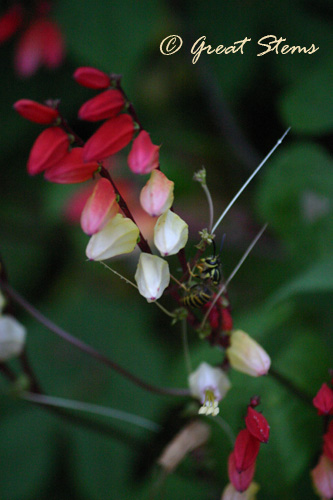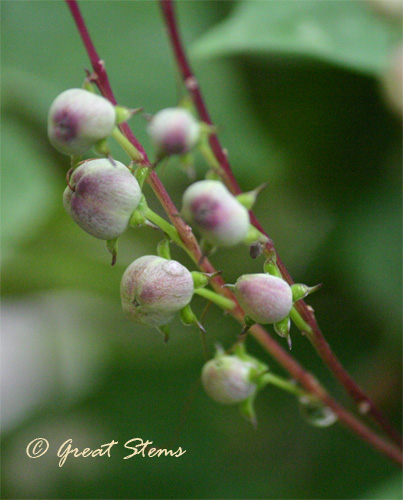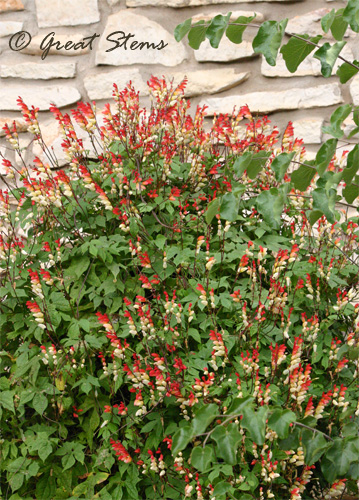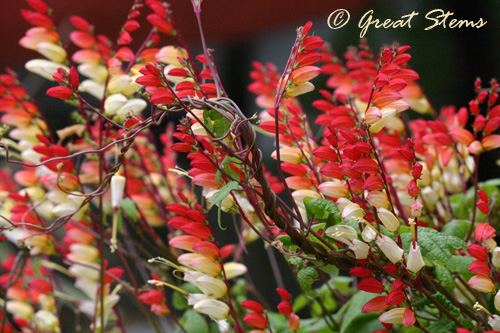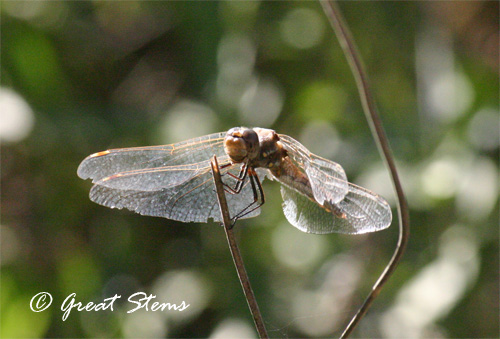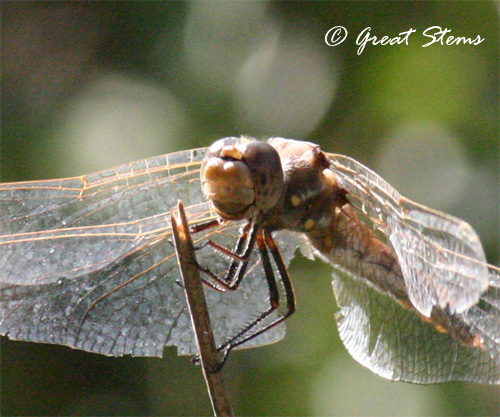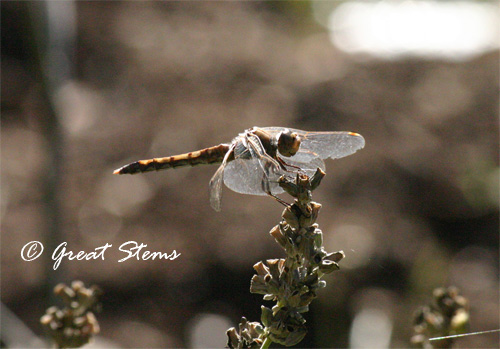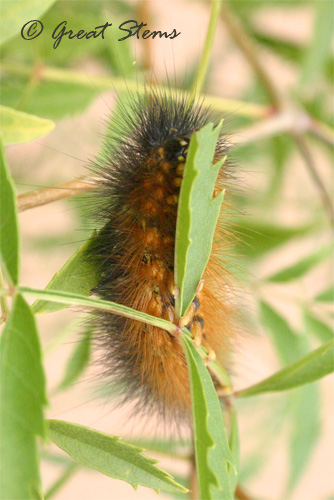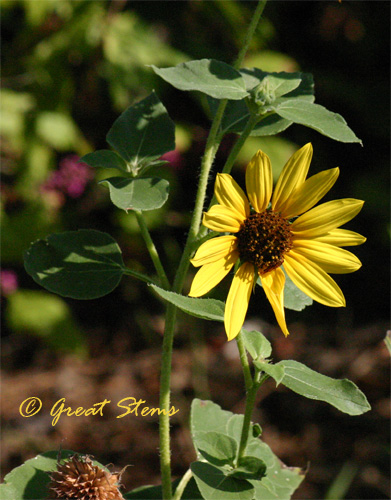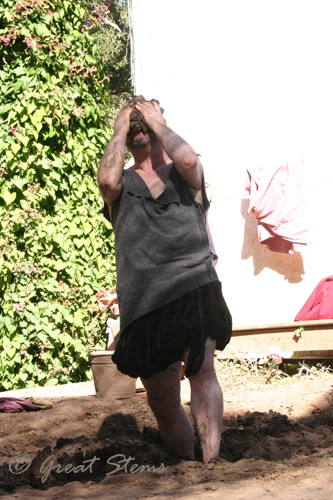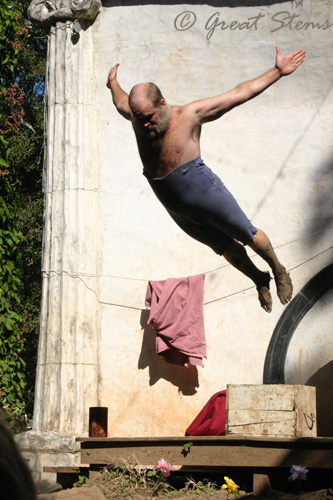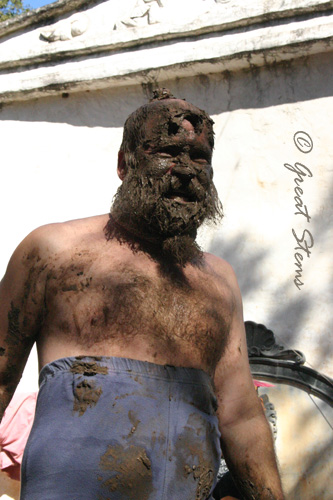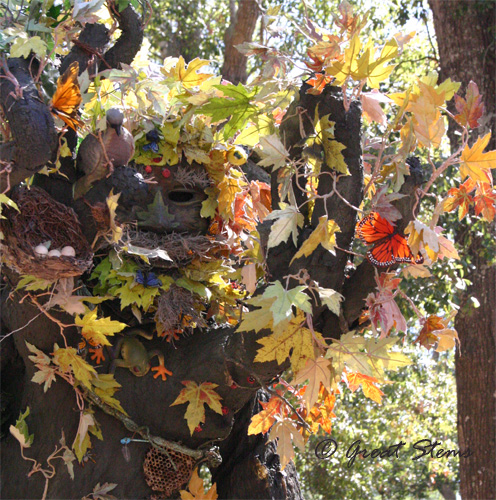We regularly join up with friends of ours to take a weekend hike with our wolf pack (five dogs between us) and all our kids (as of this week, five kids between us — congrats, Stepan and Jen and family on your new baby!). Last weekend, a few days before baby came, we ventured to our very favorite Walnut Creek Park, a 300-acre wooded habitat in north Austin. A mockingbird greeted us along the way.
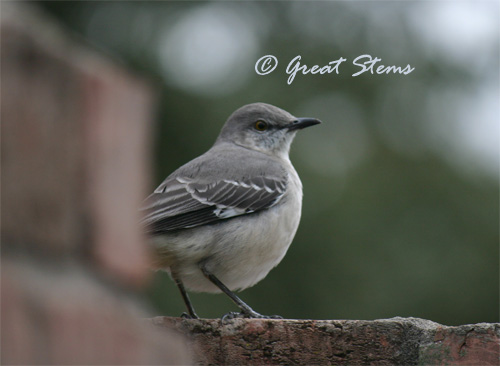
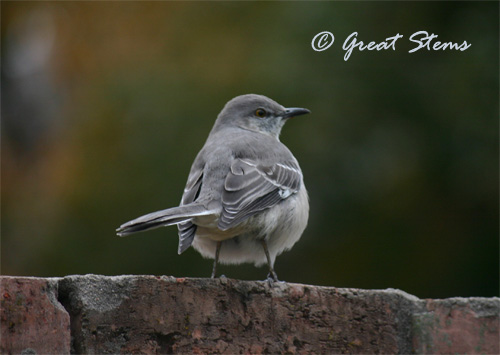 Not only is Walnut Creek Park beautiful in all seasons, it’s a leash-free zone, which means that all our dogs except our obnoxious husky get to run free (the husky gets to hike but must be attached to a human at all times). It’s also a great place for beginning to advanced mountain bikers, being covered in a maze of criss-crossing trails and creeks. In fact, there are so many trails that it’s easy to get somewhat lost if you are new to the park. Fortunately, there are usually plenty of visitors to point you in the direction you need to go.
Not only is Walnut Creek Park beautiful in all seasons, it’s a leash-free zone, which means that all our dogs except our obnoxious husky get to run free (the husky gets to hike but must be attached to a human at all times). It’s also a great place for beginning to advanced mountain bikers, being covered in a maze of criss-crossing trails and creeks. In fact, there are so many trails that it’s easy to get somewhat lost if you are new to the park. Fortunately, there are usually plenty of visitors to point you in the direction you need to go.
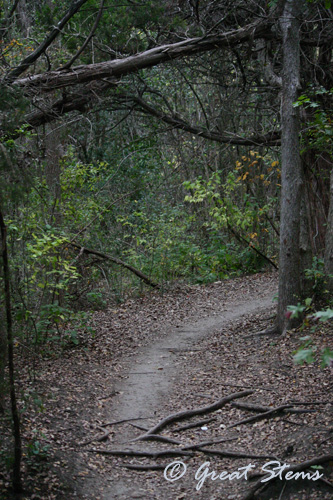 Oh, and it’s a great place to break your arm, as two of the four people in my family have done, along with countless mountain bikers at the park, I’m sure. At least there’s a hospital close by, if you do manage to get hurt. 🙂
Oh, and it’s a great place to break your arm, as two of the four people in my family have done, along with countless mountain bikers at the park, I’m sure. At least there’s a hospital close by, if you do manage to get hurt. 🙂
Right now, it’s autumn at its finest at Walnut Creek.
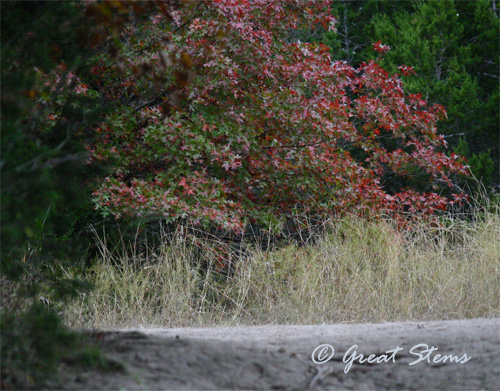
All around, the leaves of Red Oaks and other decidious trees are turning red among the evergreens.
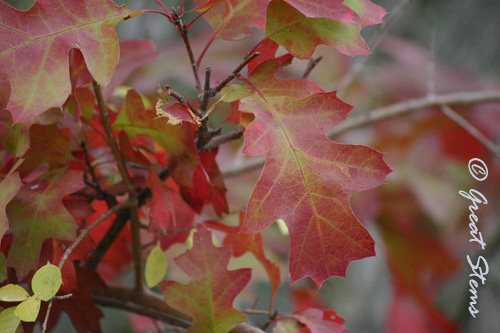
I’ll admit that I was a bit slower than usual on the hike — there were a lot of other natural beauties that I just had to capture a picture of.
Along one trail, the branches of dead snags poked out among younger Ashe Junipers and created an ominous effect. I so wanted a group of vultures to fly down and let me take their picture.
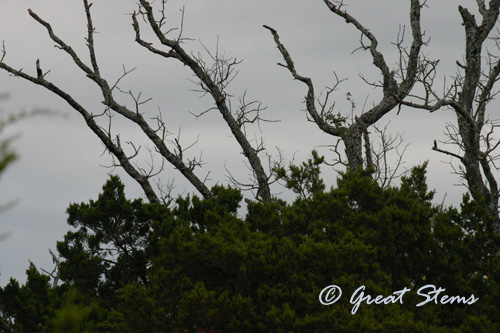
Agaritas could be found among the understory plants. This sharp-leaved shrub offers protection to young fauna, earning it the nickname, “Babysitter Bush.”
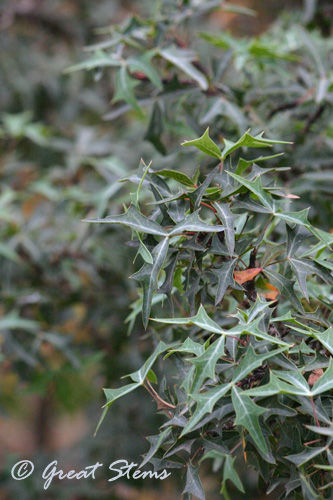
The beautiful blue berries of the evergreen Ashe Juniper made a striking color combination with Red Oak leaves. The berries are a favorite of local birds.
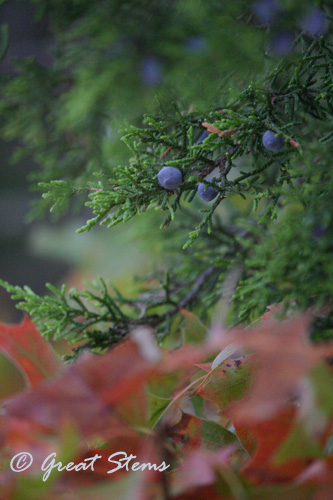
I also love the exfoliated bark of old Ashe Juniper trees, as do birds for their nests (me, I just enjoy cool-looking bark). For more information on the wildlife value of Ashe Junipers, please enjoy a read of my most recent post at Beautiful Wildlife Garden.
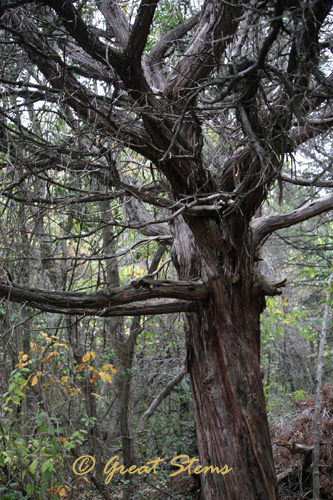
The spiny Prickly Pear had a soft green look against the autumn foliage.
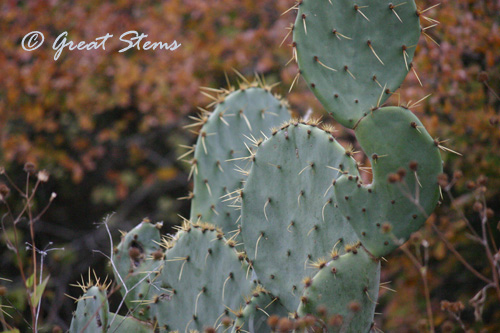
And the petal-less remains of spent flowers made dried-flower bouquets along pathways.
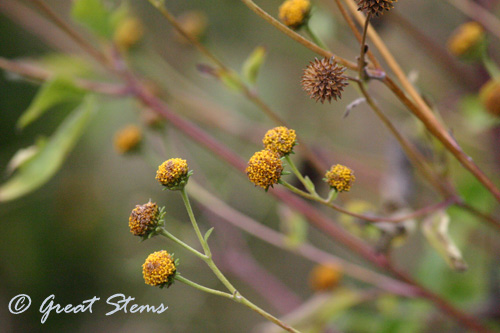
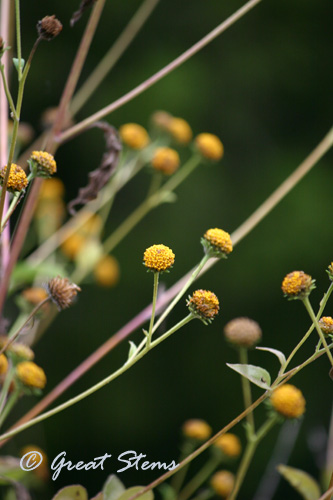
All around the woods, Flameleaf Sumac was changing from green to red foliage.
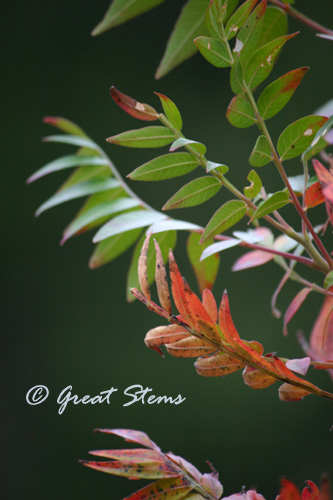
Its bright-red fall foliage proves that Flameleaf Sumac is very aptly named.
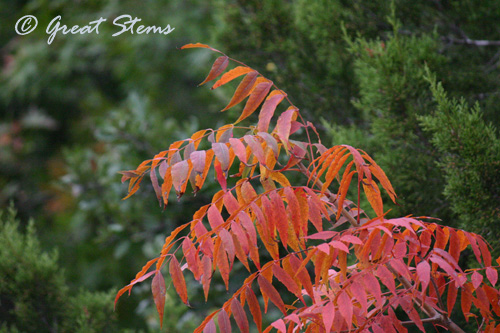
Will this be the year I give in and plant Flameleaf Sumac? I’ve been hesitant in the past, because I know it can make a thicket — but maybe it will be the key to preventing my neighbors’ nandinas and chinaberries from taking hold in my yard again. Plus the sumac berries are high in Vitamin C — might be worth a try! You know, I think I just convinced myself… if I can find it available at a local nursery.
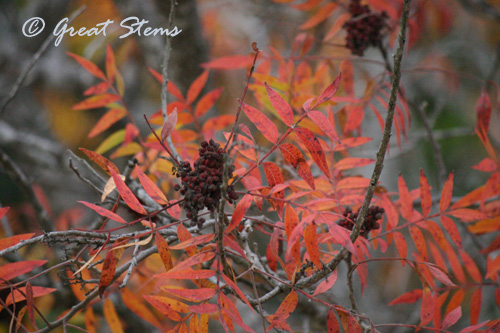
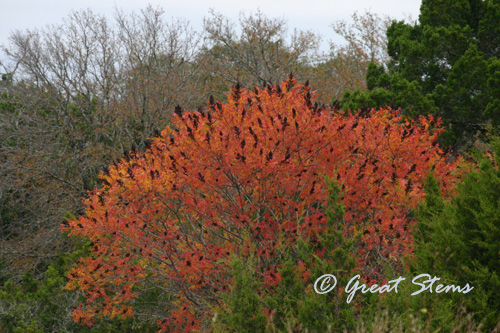 The hollies were showing off their red berries, Yaupons and Possumhaws alike.
The hollies were showing off their red berries, Yaupons and Possumhaws alike.
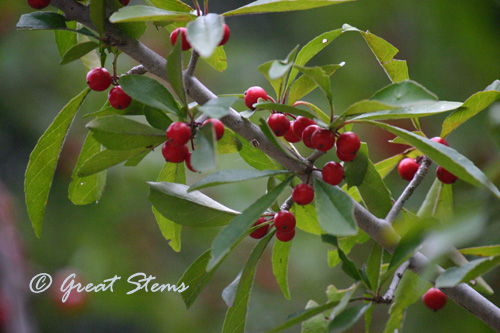
If there’s a downside to the park, other than the breaking of arms, it’s that there’s quite a lot of poison ivy around — vines and bushes alike. There unfortunately is also a serious invasion of invasives, such as evergreen Ligustrums, all the more noticeable in the fall. I tried to do my best to ignore them on our hike, but I pretty much failed, as they were everywhere. I’ll take poison ivy over Ligustrums any day, as long as I don’t have to roll in it.
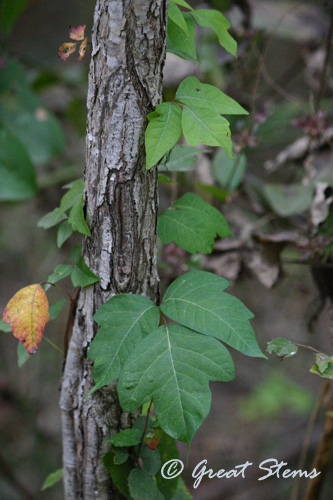
And here’s one of our favorite areas of all — Walnut Creek itself. We call this particular spot along the creek “Broken Arm Crossing” because it’s where I broke my arm on one fateful dog walk. I hold the area no ill grudge, as it is such great gathering spot for water-loving doggies. The other spot in the park where my husband broke his arm during a bike ride is now nicknamed “Michael’s Folly,” or “Michael’s Fall-ee.”

My oldest son was particularly fond of the colorful moss along a section of the creek.
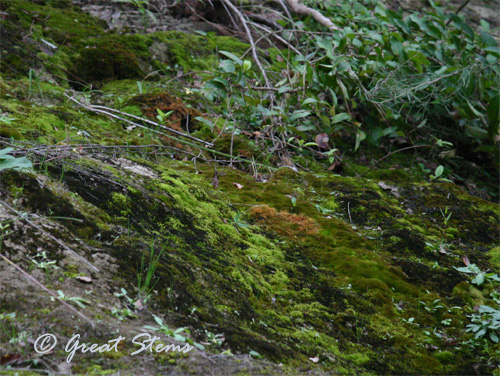
I don’t know what the name of these next plants are, but the seedheads made a gorgeous scene along a few prairie paths.
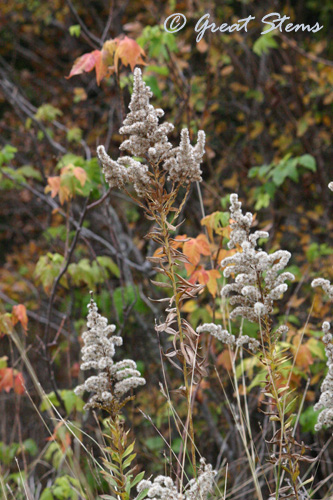
They might look soft, but don’t be fooled.
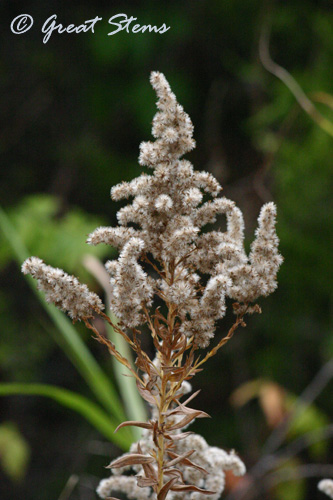
And one of my favorites, Wafer Ash (Hop Tree) is in full seed mode, as well.
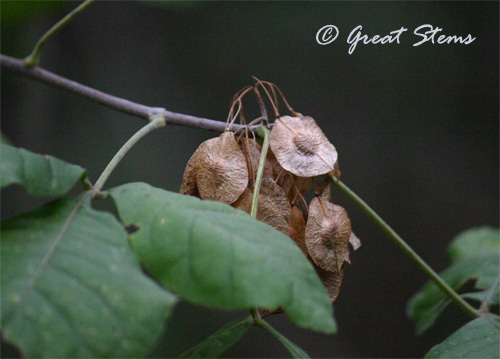 I looked everywhere on the Wafer Ash trees for Giant Swallowtail caterpillars, but alas not a bird poop-looking cat was to be found.
I looked everywhere on the Wafer Ash trees for Giant Swallowtail caterpillars, but alas not a bird poop-looking cat was to be found.
Oh well, it was a wonderful hike all the same. One can’t always find bird poop caterpillars, you know.
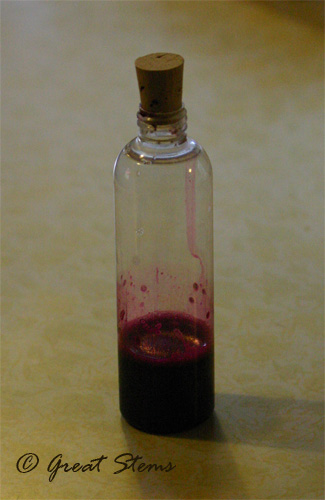 But making the ink proved to be fortuitous, as recently my son was given a Social Studies research project at school — of all the colonies, he ended up with Pennsylvania, the state in which both the Declaration of Independence and the Constitution were written. The rumors around the Internet were that these documents were written in Pokeweed Ink. (Edit: These proved to be inaccurate, however — thanks to Dana R., we know from the National Archives that iron gall ink was actually used. Iron gall ink was the ink of choice for many, many centuries — I’m going to have to experiment again!)
But making the ink proved to be fortuitous, as recently my son was given a Social Studies research project at school — of all the colonies, he ended up with Pennsylvania, the state in which both the Declaration of Independence and the Constitution were written. The rumors around the Internet were that these documents were written in Pokeweed Ink. (Edit: These proved to be inaccurate, however — thanks to Dana R., we know from the National Archives that iron gall ink was actually used. Iron gall ink was the ink of choice for many, many centuries — I’m going to have to experiment again!)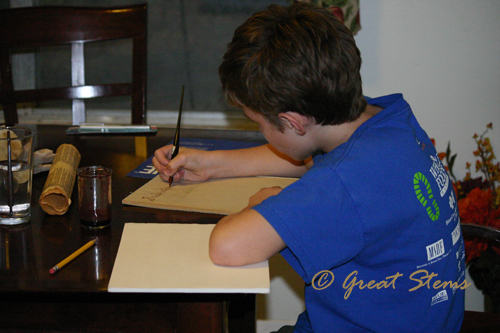 My son’s been working hard on his report and presentation on the Pennsylvania colony, and we remembered that we had that bottle of pokeweed ink, which luckily was still in good shape — apparently it fermented well (in fact, it smelled like either really old grape juice or very, very cheap wine). Whether a historically accurate ink or not, he could use it to create a document of his own.
My son’s been working hard on his report and presentation on the Pennsylvania colony, and we remembered that we had that bottle of pokeweed ink, which luckily was still in good shape — apparently it fermented well (in fact, it smelled like either really old grape juice or very, very cheap wine). Whether a historically accurate ink or not, he could use it to create a document of his own.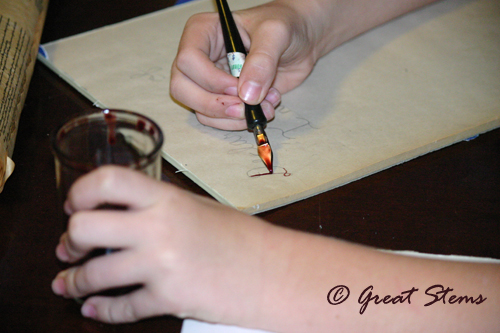 So today we had fun practicing calligraphy with both modern pens and with pen nibs dipped in the pokeweed ink. It’s a lot harder than it looks, using a nib dipped in ink — a modern calligraphy pen is so much easier, alas. But it’s not as cool as using ink the old-fashioned way! However, for this particular project, we realized that doing any fancy writing wasn’t really going to work, so my son stuck with cursive writing.
So today we had fun practicing calligraphy with both modern pens and with pen nibs dipped in the pokeweed ink. It’s a lot harder than it looks, using a nib dipped in ink — a modern calligraphy pen is so much easier, alas. But it’s not as cool as using ink the old-fashioned way! However, for this particular project, we realized that doing any fancy writing wasn’t really going to work, so my son stuck with cursive writing. My son prepared a sample Declaration for his presentation. He also took the bottle of ink with him to school. Science, history, art, fun!
My son prepared a sample Declaration for his presentation. He also took the bottle of ink with him to school. Science, history, art, fun!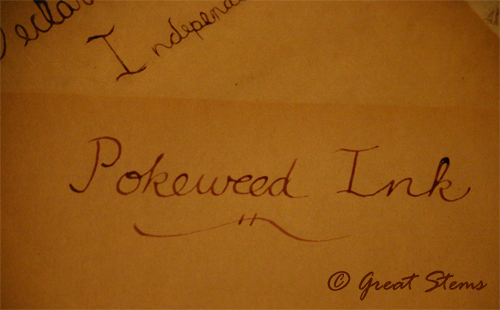























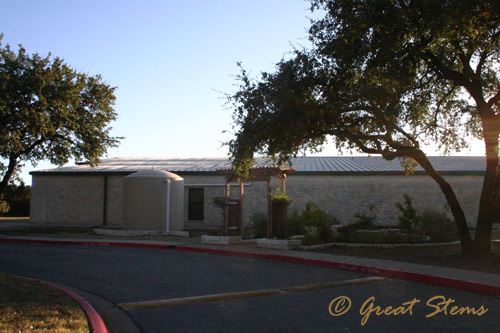


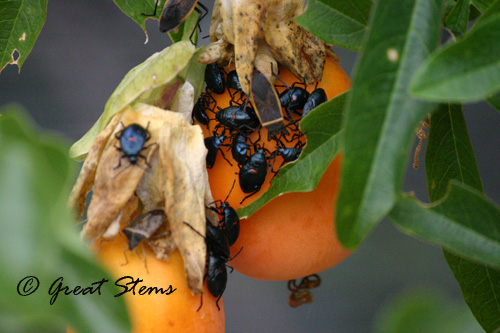
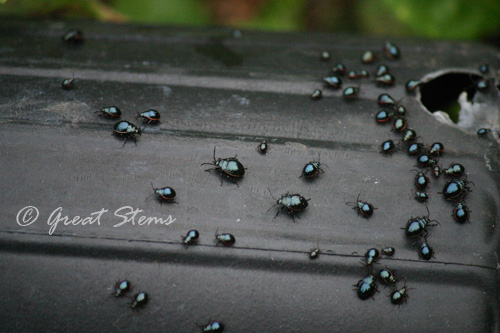
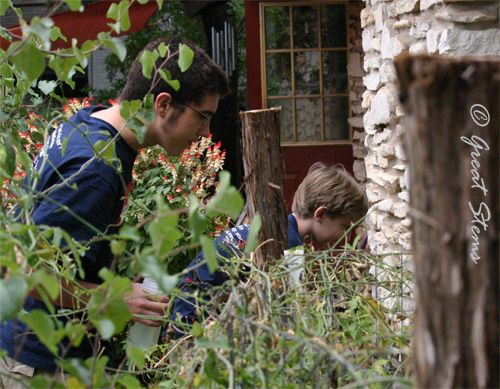
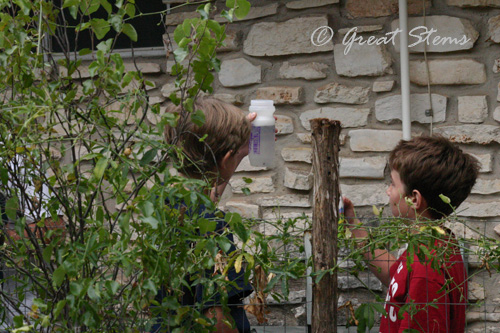
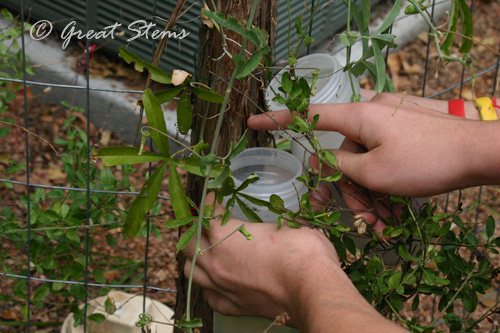
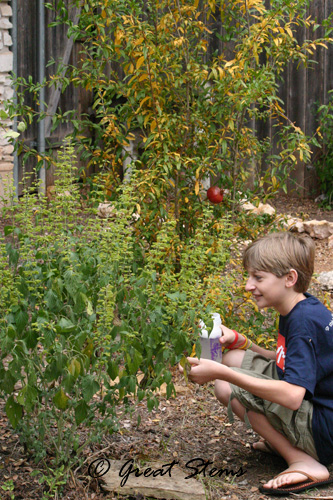
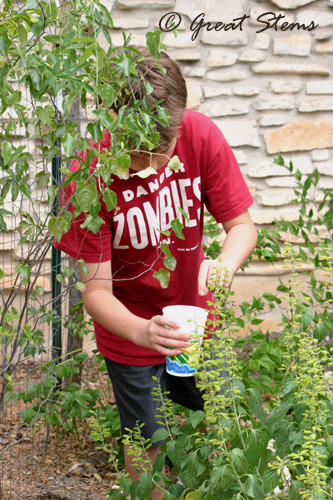
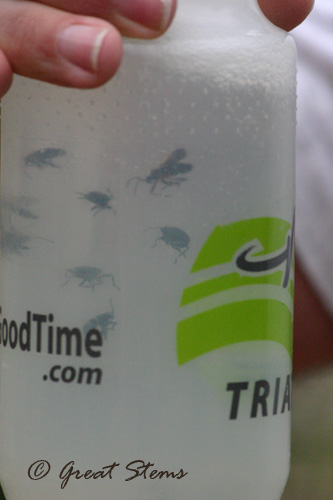
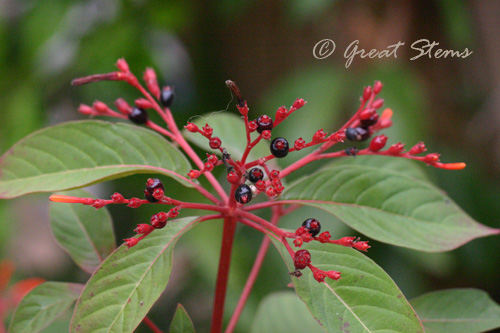
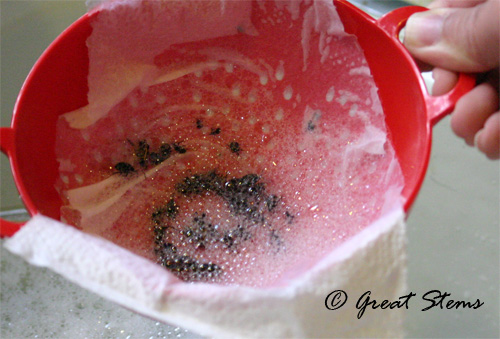
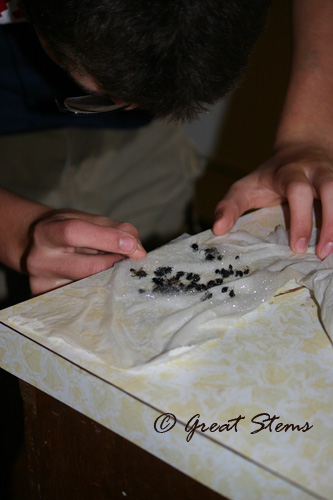
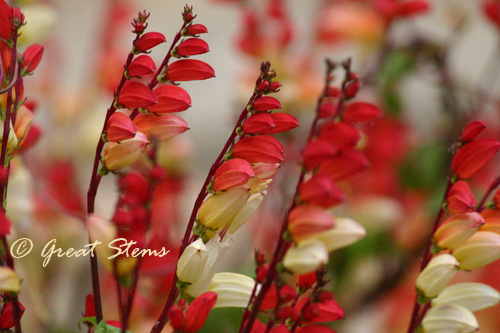
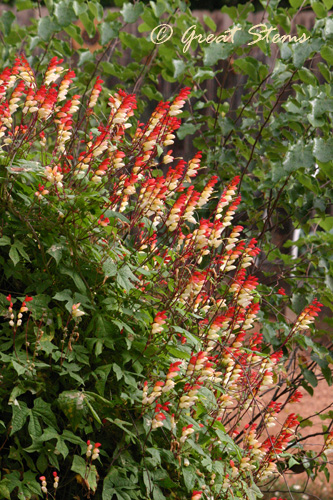
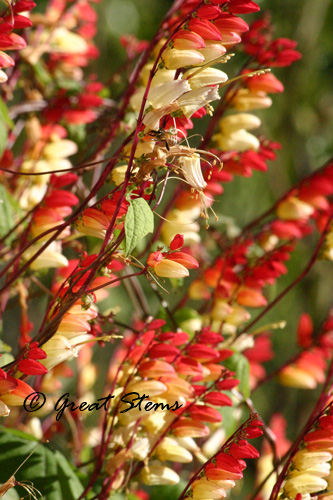 This vine is also Firecracker Vine and Spanish Flag with good reason, but I seem to prefer calling it “Exotic Luvvvvv Vine.” I’ve also had the theme song to “Love Boat” stuck in my head while creating this post, with my own version, “Love Vine.” Sing it with me now, The Love Vine… promises something for everyone…. (I’m happy to report that I did not actually know all of the original lyrics… just, uh, most of them.)
This vine is also Firecracker Vine and Spanish Flag with good reason, but I seem to prefer calling it “Exotic Luvvvvv Vine.” I’ve also had the theme song to “Love Boat” stuck in my head while creating this post, with my own version, “Love Vine.” Sing it with me now, The Love Vine… promises something for everyone…. (I’m happy to report that I did not actually know all of the original lyrics… just, uh, most of them.)